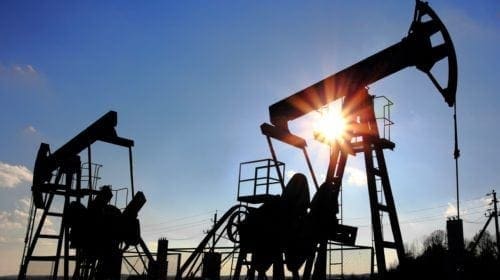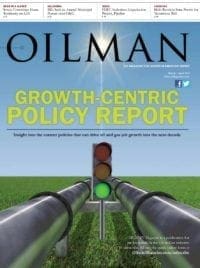The hot topic around the world continues to be the falling price of oil. Yes, oil prices have fallen more than $60 over the last few months. The stock market has seen points fall off the board, operating companies have reduced drilling budgets for 2015, the workforce has experienced some cutbacks and the general consumer is experiencing $2 gasoline.
Thankfully, Louisiana has more to offer than just oil. Louisiana is home to the second largest natural gas field in the country. At one point, the Haynesville Shale of Northwest Louisiana was the most productive field in the U.S. However, the Haynesville Shale has seen its fair share of decline over the last three years.
Once peaked at 139 rigs in 2010, the Haynesville sits at around 20 rigs today. The Haynesville, in addition to other large natural gas fields, caused the U.S. supply of natural gas to skyrocket, while demand lagged behind. This caused a simple economics curve price drop. Natural gas fell from $13 down to around $1.80 in 2012. So, while the oil market is seeing its first significant drop in several years, the natural gas market is a seasoned veteran to these price fluctuations.
How does this oil price drop affect the Haynesville Shale? As companies are evaluating their budgets, some operators might decide that drilling for natural gas is more profitable than $44 oil. Comstock Resources has announced that they will be moving rigs from different oil plays back into the Haynesville Shale. (See Louisiana News at a Glance, p. 40.)
While the drop in oil prices can cause operators to consider drilling for natural gas, three other factors continue to cause demand to rise in the natural gas market and thus keep the Haynesville Shale relevant. First, the completion of the first U.S. based liquefied natural gas (LNG) exporting facility will come online later this year. Second, Louisiana continues to see a growth trend in the manufacturing sector as dozens of new facilities are relocating to Louisiana. Third, several coal- powered electric plants are converting to natural gas-fired facilities.
Cheniere Energy’s $20 billion LNG export plant, opening in the fourth quarter of 2015, will have the capability of exporting 3 billion cubic feet of natural gas per day. Several other LNG exporting facilities have announced construction projects in Louisiana as well.
In addition to LNG exporting, Louisiana is experiencing a manufacturing renaissance. Up to $100 billion in economic development commitments have been made to Louisiana over the next three to five years. As flour is to a baker, so natural gas is the feedstock to this petro-chemical and manufacturing sector.
Finally, due to the abundance of clean burning natural gas, numerous coal- powered electric plants around the country will soon be natural gas-fired facilities. This conversion process takes about a year to complete and costs about $1 billion.
Again, with those factors driving demand for natural gas, drills will be turning in the Haynesville for many years to come, but only time will truly tell how the price of oil will specifically affect the Haynesville Shale.
Don Briggs is the President of the Louisiana Oil and Gas Association. The Louisiana Oil & Gas Association (known before 2006 as LIOGA) was organized in 1992 to represent the Independent and service sectors of the oil and gas industry in Louisiana; this representation includes exploration, production and oilfield services. Our primary goal is to provide our industry with a working environment that will enhance the industry. LOGA services its membership by creating incentives for Louisiana’s oil & gas industry, warding off tax increases, changing existing burdensome regulations, and educating the public and government of the importance of the oil and gas industry in the state of Louisiana.












